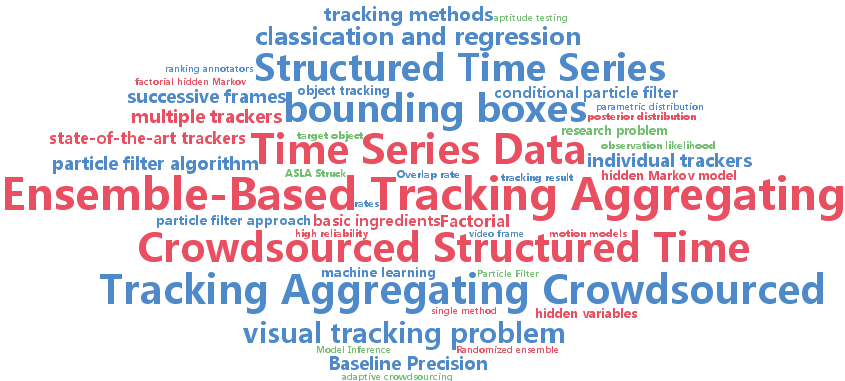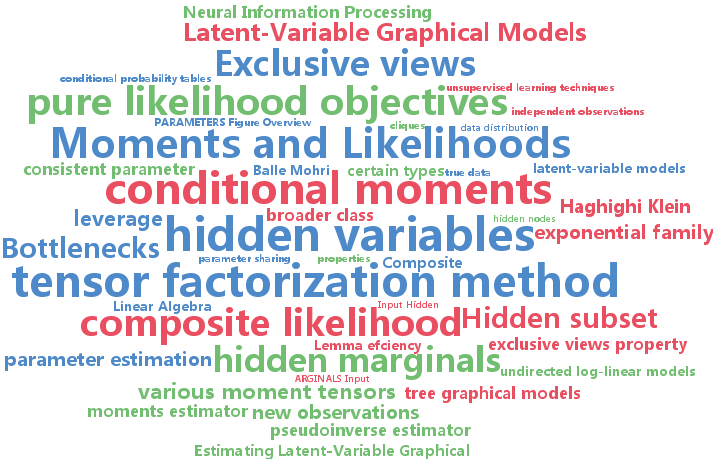hidden variables
-
Naiyan Wang and Dit-Yan Yeung
Ensemble-Based Tracking: Aggregating Crowdsourced Structured Time Series Data (pdf)
We study the problem of aggregating the contributions of multiple contributors in a crowdsourcing setting. The data involved is in a form not typically considered in most crowdsourcing tasks, in that the data is structured and has a temporal dimension. In particular, we study the visual tracking problem in which the unknown data to be estimated is in the form of a sequence of bounding boxes representing the trajectory of the target object being tracked. We propose a factorial hidden Markov model (FHMM) for ensemble-based tracking by learning jointly the unknown trajectory of the target and the reliability of each tracker in the ensemble. For efficient online inference of the FHMM, we devise a conditional particle filter algorithm by exploiting the structure of the joint posterior distribution of the hidden variables. Using the largest open benchmark for visual tracking, we empirically compare two ensemble methods constructed from five state-of-the-art trackers with the individual trackers. The promising experimental results provide empirical evidence for our ensemble approach to "get the best of all worlds".
-
Wei Ping and Qiang Liu and Alex Ihler
Marginal Structured SVM with Hidden Variables (pdf)
In this work, we propose the marginal structured SVM (MSSVM) for structured prediction with hidden variables. MSSVM properly accounts for the uncertainty of hidden variables, and can significantly outperform the previously proposed latent structured SVM (LSSVM; Yu & Joachims (2009)) and other state-of-art methods, especially when that uncertainty is large. Our method also results in a smoother objective function, making gradient-based optimization of MSSVMs converge significantly faster than for LSSVMs. We also show that our method consistently outperforms hidden conditional random fields (HCRFs; Quattoni et al. (2007)) on both simulated and real-world datasets. Furthermore, we propose a unified framework that includes both our and several other existing methods as special cases, and provides insights into the comparison of different models in practice.
-
Arun Tejasvi Chaganty and Percy Liang
Estimating Latent-Variable Graphical Models using Moments and Likelihoods (pdf)
Recent work in method of moments provide consistent estimates for latent-variable models, avoiding local optima issues, but these methods can only be applied to certain types of graphical models. In this work, we show that the method of moments in conjunction with a composite marginal likelihood objective yields consistent parameter estimates for a much broader class of directed and undirected graphical models, including loopy graphs with high treewidth. Specifically, we use tensor factorization to reveal partial information about the hidden variables, rendering the otherwise non-convex negative log-likelihood convex. Our approach gracefully extends to models outside our class by incorporating the partial information via posterior regulraization.
-
Sanjeev Arora and Aditya Bhaskara and Rong Ge and Tengyu Ma
Provable Bounds for Learning Some Deep Representations (pdf)
We give algorithms with provable guarantees that learn a class of deep nets in the generative model view popularized by Hinton and others. Our generative model is an n node multilayer neural net that has degree at most $n^{\gamma



